1139
Solar energy - a huge, inexhaustible and clean resource
Solar power generation is a clean alternative to electricity produced from the fuel, without the pollution of air and water, lack of global environmental pollution and without any threat to our public health. A total of 18 sunny days in the world contains the same amount of energy, which is stored in all the coal reserves of the planet, oil and natural gas. Beyond the atmosphere, solar energy contains about 1,300 watts per square meter. Once it reaches the atmosphere approximately one third of the light is reflected back into space, while others continue to follow the surface of the Earth.
Averaged over the entire surface of the planet, a square meter collects 4, 2 kilowatt-hours of energy every day, or roughly the energy equivalent of a barrel of oil almost a year. Desert, with very dry air and a small amount of cloud cover, can get more than 6 kWh per day per square meter on average during the year.
Converting solar energy into electricity
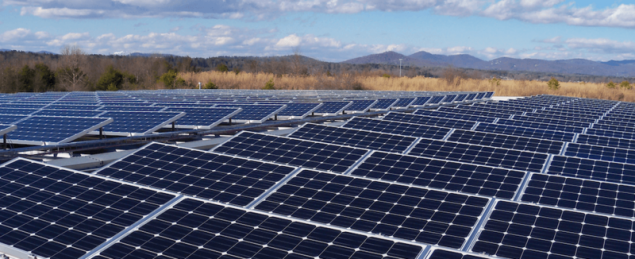
Photovoltaic (PV) panels and concentrating solar power (CSP) objects capture sunlight can transform it into useful energy. PV roof panels make solar power viable in almost every part of the United States. In sunny locations such as Los Angeles or Phoenix, 5 kilowatt system produces an average of 7,000 to 8,000 kilowatt-hours per year, roughly equivalent to the electricity use of the United States of a typical household.
In 2015, almost 800 000 photovoltaic systems were installed on the roofs of homes across the United States. Large-scale PV projects use photovoltaic panels to convert sunlight into electricity. These projects often have outputs in the range of hundreds of megawatts, and the millions of solar panels installed on a large area of land.
How do solar panels work?
Solar photovoltaic (PV) panels on the basis of a high, but surprisingly simple technology that converts sunlight directly into electricity.

In 1839, French scientist Edmond Becquerel discovered that some materials will emit electric sparks when struck with sunlight. The researchers found that in the near future this property is called the photoelectric effect, can be used; first photovoltaic (PV) cell was made from selenium in the late 1800s. In 1950, scientists at Bell Labs reviewed the technology and using the silicon produced in solar cells, able to convert the energy of sunlight directly into electricity.
Components of PV cell
The most important components of the PV cells are two layers of semiconductor material, typically consisting of a silicon crystal. By itself, the crystallizing silicon is not a very good conductor of electricity, so it deliberately added impurity - a process called doping step.
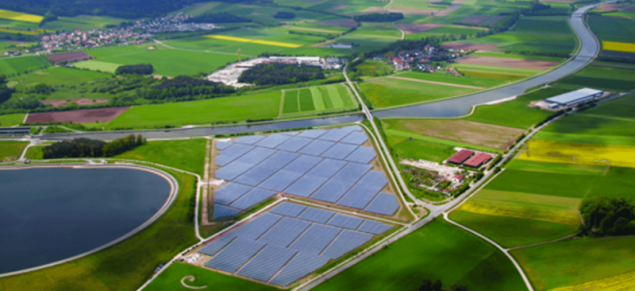
The bottom layer consists of photocells is typically doped with boron, which in conjunction with the silicon creates a positive charge (p), while the upper layer, doped with phosphorus, interacting with silicon - negative charge (n)
.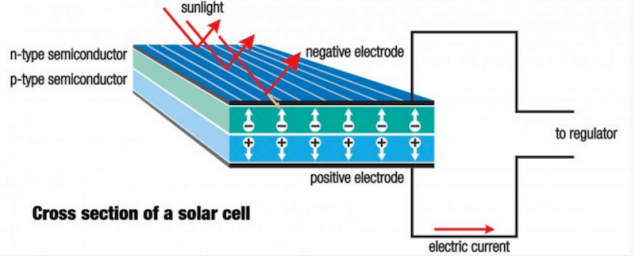
The extra electrons from the n-layer can leave their atoms, whereas the p-layer captures these electrons. Rays of light "knock out" electrons from the atoms of the n-layer, and then they fly in the p-layer to occupy the empty space. In this way, the electrons are running in a circle, leaving the p-layer, passing through the load and returning to the n-layer.
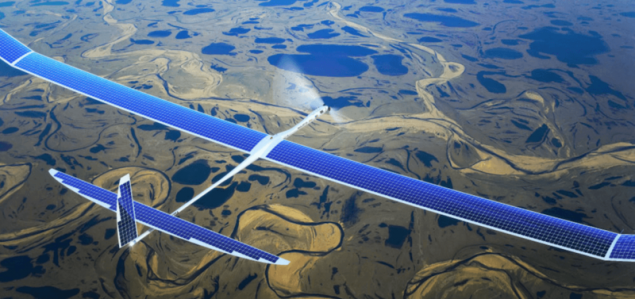
drones on solar energy
Each cell generates a very low power (a few watts) so they are grouped into modules or panels. The panels are then either used as single units or grouped into larger arrays.
Transition to a power system with a large number of solar energy offers many advantages.

The cost of solar cells decreases rapidly (in 1970 -1kVt-hours of electricity produced using them was worth $ 60, in 1980 - 1dollar now -20-30 cents)
. Because of this demand for solar cells is growing at 25% per year, and the annual volume of sold batteries exceeds the (power) 40mW. Efficiency solar cells, is achieved in the mid-70s in the laboratory 18%, now stands at 28, 5% for crystalline silicon cells and 35% - of the double-layer sheets of gallium arsenide and gallium antifashion
. Developed promising elements of the thin film (thickness 1-2mkm) semiconductor materials: although their efficiency is low (not more than 16%), the cost is very small (no more than 10% of today's solar cells). Soon, the researchers suggest that the cost of 1 kW-h will be 10 cents, that will put solar energy in the first place in the energy independence of many countries.
Perovskite "cheapen" the solar energy
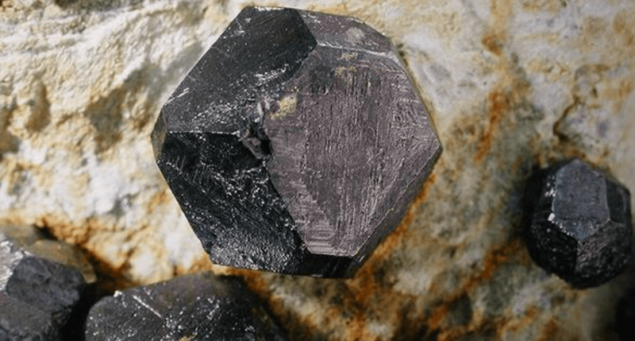
Back in 2013, the news spread across the expanses of the network: the mineral perovskite revolutionize the solar power industry. The use of silicon instead of perovskite will reduce the cost of electricity production using solar cells. Perovskite (calcium titanate) was discovered in the early 19th century in the Ural Mountains, named in honor of LA Perovsky (known minerals amateur). As the solar cell component began to be used in 2009.
Batteries are covered by an innovative low-cost solar cell, a main advantage of which is that it can convert the energy of a much larger number of pieces of sunlight. Perovskites is a crystalline structure that allows you to soak up the sun at peak efficiency. According to preliminary estimates, the use of battery-based perovskite can reduce the cost of energy in kilowatt-seven times.
"The main advantage of the new solar cells is not so much efficiency, but in the fact that the material is pretty darn cheap. Batteries based perovskite, which do not use silicon, can make solar energy truly mass. »
Solar energy for data centers
10% of all electricity produced in the world consume server farms. Since energy-efficient networks and renewable sources of energy is now being introduced in all branches, data centers are not left behind. The negative impact of server farms on the environment has long been on the lips of ecologists. Therefore, the owners of data centers seeking to reduce the negative impact of their data centers, resorting to advanced energy efficient and "green" technologies generate electricity here include freecooling, the system of local generating capacity based on renewable energy sources.

As a way out - solar power plant near the server farm, in countries where climatic conditions permit. It is ideal for server farms are deployed in the tropics or subtropics. After all, the use of solar panels on the roof of the data center, except that provide "green energy", so also will help to reduce the heat load on the building, as the shadow created by them to minimize the amount of heat absorbed by the roof. Gelioelektrostantsiya reduce the overall negative effect on the data center environment, and increase the reliability of the data center are located in regions where there are shortages in the central grid.
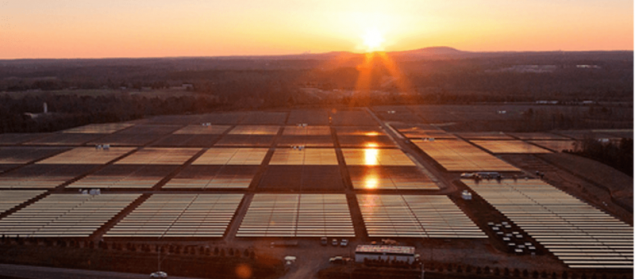
large power plant using renewable energy sources close to Apple data center in Maiden, North Carolina (USA)
Switch in conjunction with Nevada Power energy company started construction next to the Las Vegas Switch Station then solar station with capacity of 100 MW. The American media company Switch called "troublemakers" on the commercial data center market, is one of the largest players in the industry. The company is engaged in the construction and support of datacenter facilities - buildings and engineering infrastructure without proper computer equipment, its main model of interaction with customers -. Colocation
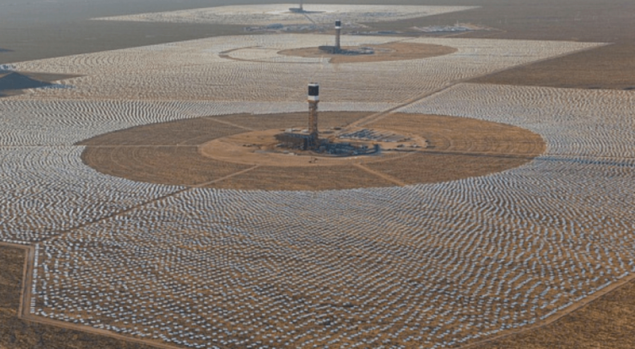
the world's largest solar thermal power plant Ivanpah 400 MW
In 2015, the United States and Japan have begun to develop a new data center power supply mechanism by solar energy. The project involves the study of new possibilities "... the use of ligament generation capacity on the basis of solar energy systems and HVDC class (high voltage DC) used for the distribution of electricity generated by solar panels on the data center level." Such a combination of HVDC and solar panels will provide an opportunity to deploy a single backup power system based on batteries, while it will be possible to save on capital and operational expenses.
Interestingly
German architect Andre Broezel Rawlemon the company has created the solar battery in the form of a moving glass ball. He calls it a new generation of the generator, which will catch the maximum number of rays, as it is equipped with a system of tracking the movement of the sun and the change of weather sensors, and is 35% more efficient compared to standard solar panels.
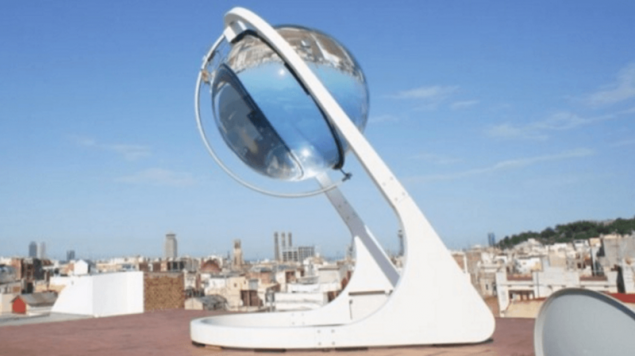
Japanese power company Shimizu Corporation announce in 2015 its intention to build the largest solar power plant on the natural satellite of our planet - the moon. Power in the form of rings with solar panels will encircle the moon of the planet Saturn for example, and transfer energy to the Earth. From a solar station Shimizu Corporation expects 13 thousand terawatts of energy / year. Not yet know the price and the date of commencement of construction of the space.

The Institute of Progressive Architecture in Catalonia have developed a solar panel, which can operate on the plants, moss and soil. The advantage of this technique is to avoid dangerous toxic materials and heavy metals in the production of solar panels. Here special bacteria are used in tiny fuel cells, placed in the ground under the plant roots.
Bacteria need to produce cheap energy in the mini-batteries. Plants will ensure the life cycle of bacteria, and water serve as a make-up for the entire system. This innovative system can be operated in areas where sunlight is not so much, if we replace the moss plants, as it can grow in the shade.
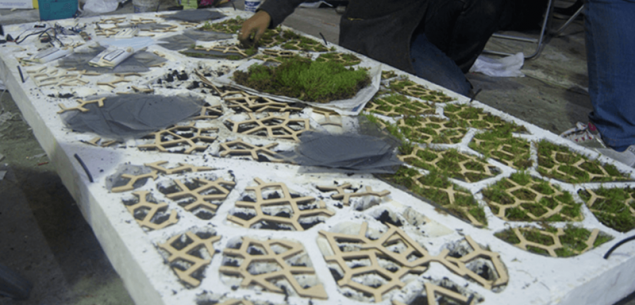
Averaged over the entire surface of the planet, a square meter collects 4, 2 kilowatt-hours of energy every day, or roughly the energy equivalent of a barrel of oil almost a year. Desert, with very dry air and a small amount of cloud cover, can get more than 6 kWh per day per square meter on average during the year.
Converting solar energy into electricity

Photovoltaic (PV) panels and concentrating solar power (CSP) objects capture sunlight can transform it into useful energy. PV roof panels make solar power viable in almost every part of the United States. In sunny locations such as Los Angeles or Phoenix, 5 kilowatt system produces an average of 7,000 to 8,000 kilowatt-hours per year, roughly equivalent to the electricity use of the United States of a typical household.
In 2015, almost 800 000 photovoltaic systems were installed on the roofs of homes across the United States. Large-scale PV projects use photovoltaic panels to convert sunlight into electricity. These projects often have outputs in the range of hundreds of megawatts, and the millions of solar panels installed on a large area of land.
How do solar panels work?
Solar photovoltaic (PV) panels on the basis of a high, but surprisingly simple technology that converts sunlight directly into electricity.

In 1839, French scientist Edmond Becquerel discovered that some materials will emit electric sparks when struck with sunlight. The researchers found that in the near future this property is called the photoelectric effect, can be used; first photovoltaic (PV) cell was made from selenium in the late 1800s. In 1950, scientists at Bell Labs reviewed the technology and using the silicon produced in solar cells, able to convert the energy of sunlight directly into electricity.
Components of PV cell
The most important components of the PV cells are two layers of semiconductor material, typically consisting of a silicon crystal. By itself, the crystallizing silicon is not a very good conductor of electricity, so it deliberately added impurity - a process called doping step.

The bottom layer consists of photocells is typically doped with boron, which in conjunction with the silicon creates a positive charge (p), while the upper layer, doped with phosphorus, interacting with silicon - negative charge (n)
.

The extra electrons from the n-layer can leave their atoms, whereas the p-layer captures these electrons. Rays of light "knock out" electrons from the atoms of the n-layer, and then they fly in the p-layer to occupy the empty space. In this way, the electrons are running in a circle, leaving the p-layer, passing through the load and returning to the n-layer.

drones on solar energy
Each cell generates a very low power (a few watts) so they are grouped into modules or panels. The panels are then either used as single units or grouped into larger arrays.
Transition to a power system with a large number of solar energy offers many advantages.

The cost of solar cells decreases rapidly (in 1970 -1kVt-hours of electricity produced using them was worth $ 60, in 1980 - 1dollar now -20-30 cents)
. Because of this demand for solar cells is growing at 25% per year, and the annual volume of sold batteries exceeds the (power) 40mW. Efficiency solar cells, is achieved in the mid-70s in the laboratory 18%, now stands at 28, 5% for crystalline silicon cells and 35% - of the double-layer sheets of gallium arsenide and gallium antifashion
. Developed promising elements of the thin film (thickness 1-2mkm) semiconductor materials: although their efficiency is low (not more than 16%), the cost is very small (no more than 10% of today's solar cells). Soon, the researchers suggest that the cost of 1 kW-h will be 10 cents, that will put solar energy in the first place in the energy independence of many countries.
Perovskite "cheapen" the solar energy

Back in 2013, the news spread across the expanses of the network: the mineral perovskite revolutionize the solar power industry. The use of silicon instead of perovskite will reduce the cost of electricity production using solar cells. Perovskite (calcium titanate) was discovered in the early 19th century in the Ural Mountains, named in honor of LA Perovsky (known minerals amateur). As the solar cell component began to be used in 2009.
Batteries are covered by an innovative low-cost solar cell, a main advantage of which is that it can convert the energy of a much larger number of pieces of sunlight. Perovskites is a crystalline structure that allows you to soak up the sun at peak efficiency. According to preliminary estimates, the use of battery-based perovskite can reduce the cost of energy in kilowatt-seven times.
"The main advantage of the new solar cells is not so much efficiency, but in the fact that the material is pretty darn cheap. Batteries based perovskite, which do not use silicon, can make solar energy truly mass. »
Solar energy for data centers
10% of all electricity produced in the world consume server farms. Since energy-efficient networks and renewable sources of energy is now being introduced in all branches, data centers are not left behind. The negative impact of server farms on the environment has long been on the lips of ecologists. Therefore, the owners of data centers seeking to reduce the negative impact of their data centers, resorting to advanced energy efficient and "green" technologies generate electricity here include freecooling, the system of local generating capacity based on renewable energy sources.

As a way out - solar power plant near the server farm, in countries where climatic conditions permit. It is ideal for server farms are deployed in the tropics or subtropics. After all, the use of solar panels on the roof of the data center, except that provide "green energy", so also will help to reduce the heat load on the building, as the shadow created by them to minimize the amount of heat absorbed by the roof. Gelioelektrostantsiya reduce the overall negative effect on the data center environment, and increase the reliability of the data center are located in regions where there are shortages in the central grid.

large power plant using renewable energy sources close to Apple data center in Maiden, North Carolina (USA)
Switch in conjunction with Nevada Power energy company started construction next to the Las Vegas Switch Station then solar station with capacity of 100 MW. The American media company Switch called "troublemakers" on the commercial data center market, is one of the largest players in the industry. The company is engaged in the construction and support of datacenter facilities - buildings and engineering infrastructure without proper computer equipment, its main model of interaction with customers -. Colocation

the world's largest solar thermal power plant Ivanpah 400 MW
In 2015, the United States and Japan have begun to develop a new data center power supply mechanism by solar energy. The project involves the study of new possibilities "... the use of ligament generation capacity on the basis of solar energy systems and HVDC class (high voltage DC) used for the distribution of electricity generated by solar panels on the data center level." Such a combination of HVDC and solar panels will provide an opportunity to deploy a single backup power system based on batteries, while it will be possible to save on capital and operational expenses.
Interestingly
German architect Andre Broezel Rawlemon the company has created the solar battery in the form of a moving glass ball. He calls it a new generation of the generator, which will catch the maximum number of rays, as it is equipped with a system of tracking the movement of the sun and the change of weather sensors, and is 35% more efficient compared to standard solar panels.

Japanese power company Shimizu Corporation announce in 2015 its intention to build the largest solar power plant on the natural satellite of our planet - the moon. Power in the form of rings with solar panels will encircle the moon of the planet Saturn for example, and transfer energy to the Earth. From a solar station Shimizu Corporation expects 13 thousand terawatts of energy / year. Not yet know the price and the date of commencement of construction of the space.

The Institute of Progressive Architecture in Catalonia have developed a solar panel, which can operate on the plants, moss and soil. The advantage of this technique is to avoid dangerous toxic materials and heavy metals in the production of solar panels. Here special bacteria are used in tiny fuel cells, placed in the ground under the plant roots.
Bacteria need to produce cheap energy in the mini-batteries. Plants will ensure the life cycle of bacteria, and water serve as a make-up for the entire system. This innovative system can be operated in areas where sunlight is not so much, if we replace the moss plants, as it can grow in the shade.

























